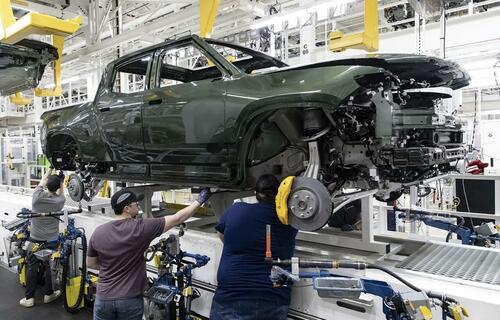By the numbers, April should be another strong month for the U.S. auto industry. According to analysis from Deutsche Bank’s auto team, led by Edison Yu, the seasonally adjusted annual rate (SAAR) for light vehicle sales is expected to come in at 17.5 million units.
That’s a sharp jump from the 16.0 million SAAR posted in April 2024 and only a modest decline from March’s 17.8 million pace. Sales volumes appear healthy across the board: total sales are up 11% year-over-year, with retail sales gaining 9% and fleet sales accelerating by 21%, the team wrote in a note out earlier this week.
Average transaction prices rose to $45,600—a 1.6% YoY increase—while industry-wide incentives fell 10.5% from March, signaling persistent consumer demand despite price inflation. One notable exception: Ford. The company raised its incentives 16% month-over-month, attributed to an aggressive employee pricing campaign aimed at clearing older inventory.
But while April paints a rosy picture, Deutsche Bank is flashing some warning signs for 2025. Last month, the firm cut its 2025 SAAR forecast to 15.4 million units, citing looming pressures from new tariffs and the inflationary impact of tightened final assembly rules. The analysis estimates automakers will need to raise prices by 6–12% just to comply with domestic assembly regulations—a figure that rises substantially when accounting for localized parts content.
In a market already stretched by affordability issues and rising interest rates, the prospect of further ATP hikes suggests that demand elasticity could finally buckle. What remains to be seen is how much more the American consumer can absorb before opting out of the new car market altogether.
In late April this same Deutsche team wrote that U.S. auto tariffs were increasingly looking like a permanent fixture and said they were closely monitoring how automakers are responding each week—particularly on pricing, incentives, and production shifts.
While the administration has hinted at potential relief, there’s still no clarity on what that might entail. For now, Deutsche Bank assumes a 25% tariff applies to all imported vehicles, except those qualifying under USCMA rules until customs can fully assess non-U.S. content. Imported parts are expected to fall under the tariff starting May 3rd.
Responses among automakers remain mixed. Ford plans to hike prices on new vehicles this month, Tesla is reportedly halting Chinese parts imports for its CyberCab and Semi programs, and layoffs are anticipated at Volvo truck plants.
Last week we noted that Deutsche Bank said automakers (OEMs) are adopting a wide range of strategies to navigate the uncertainty—adjusting pricing, incentives, and production plans on a rolling basis.
Loading…


















